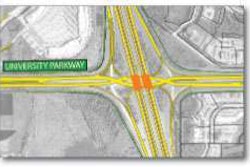Look out
Every month, at least one construction worker is killed when backed over by a construction vehicle in a work zone.

The bottom line: Backovers and runovers are the leading cause of worker deaths in work zones. In this case, both workers made mistakes that contributed to the accident. The driver of the truck failed to use a second person as a spotter when in reverse, and the victim failed to recognize the audible signals indicating the truck was backing up and was in one of the truck’s blind spots. The accident could have been prevented if they had been alert and aware of their surroundings.
Pay attention. Always know what’s going on around you. If you’re on foot on a site, make sure you avoid the blind spots of all the equipment on the site. The blind spots can be larger than you expect, and they are different for each piece of equipment. If you’re not sure, familiarize yourself with NIOSH’s blind spot diagrams, which can be accessed online at https://www.cdc.gov/niosh/topics/highwayworkzones/BAD/imagelookup.html.
Implement an ITCP. An Internal Traffic Control Plan puts a traffic pattern in place, reducing the amount of backing necessary and minimizing the exposure of workers on foot to vehicle traffic. To create a preliminary plan:
• Draw work area layout (from project drawings or traffic control plan)
• Plot where work activities will take place
• Plot vehicle access points
• Identify where equipment will be backing and create pedestrian free zones
• Draw traffic flows for workers, equipment and materials
• Determine storage areas and plot utilities
• Establish parking areas, restrooms and break areas
• Explain diagram and specify duties or personnel
• Write in vehicle speed limits.
Consider additional safety equipment. While a reverse audible signal is an effective method of alerting those around you that your equipment is in motion, think about taking an active approach by adding safety equipment that will let the operator know when someone is in a blind spot. In addition to standard video cameras, radar-based, sonar-based, tag-based and thermal imaging systems are available, as well as infrared sensors.
Educate and reinforce. Regularly include runover and backover scenarios in training and toolbox talks. EW
Information from this report came from an actual accident report, the American Road and Transportation Builders Association’s National Workzone Safety Clearinghouse and the Center for Disease Control’s National Institute for Occupational Safety and Health. It is meant for general education purposes only.











